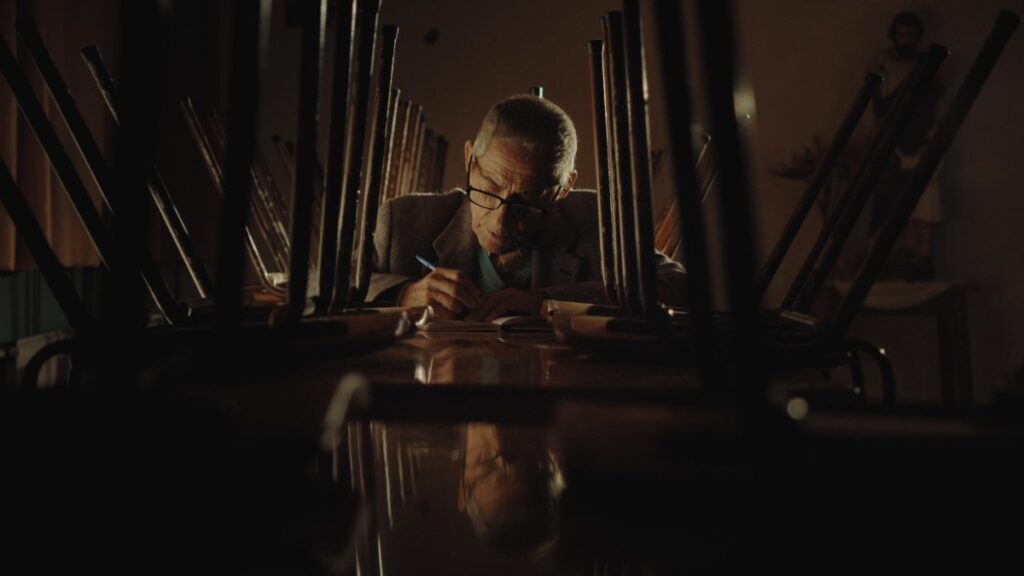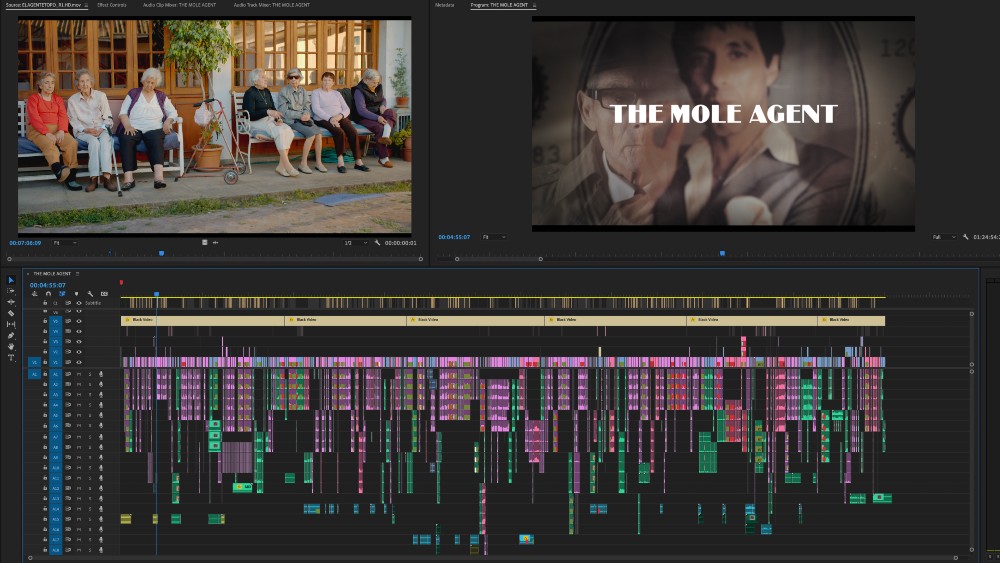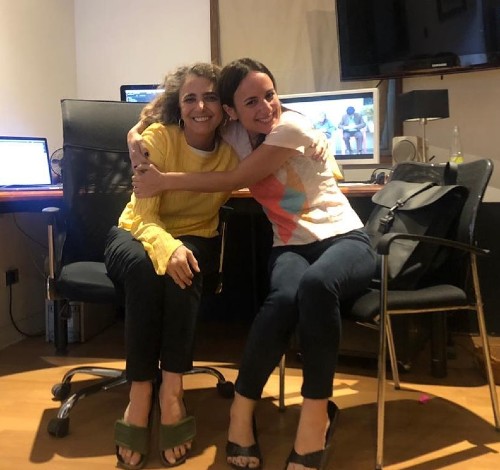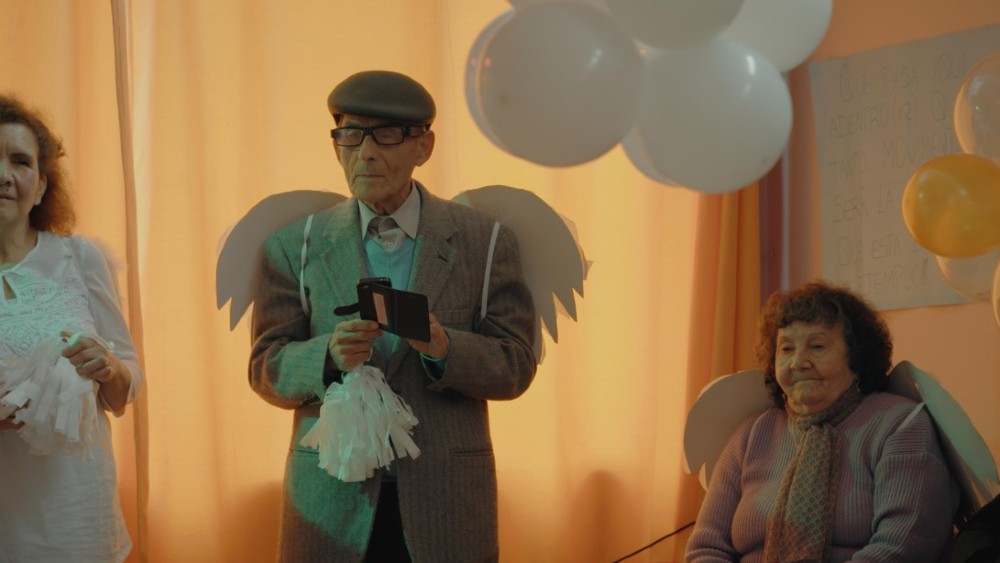
Nominated for an Academy Award for Documentary (Feature), The Mole Agent sends elderly investigator Sergio Chamy into The San Francisco Nursing Home, a retirement community in the El Monte district of Santiago, Chile. His job is to uncover possible mistreatment of a patient.
Despite its mock-espionage opening and allusions to film noir, Maite Alberdi‘s documentary turns into a deeply emotional look at the lives of the elderly. The film walks a tightrope between humor and despair, in the process opening a window into a world rarely seen with such compassion on screen.
The Mole Agent is the first feature documentary to be edited by Carolina Siraqyan. A veteran with 2000 commercials and trailers to her credit, Siraqyan met Alberdi years earlier while teaching a class on editing trailers.
“I edited the trailer for her documentary, The Grown Ups,” Siraqyan said on a Zoom call from Chile. “We connected, we feel life in a similar way. We laugh at the same things. It was simple for us to work together.”
Working on Adobe Premiere Pro, Siraqyan began editing after Alberdi and her crew finished shooting. Her first job was to screen and categorize 300 hours of footage taken over 72 days. In addition, Sergio shot additional footage with his “spy” cameras.

“For this movie, my first impressions on the emotions of the scenes were very important,” Siraqyan said. “When I viewed the dailies, I wrote down my reactions to the scenes. I marked, then charted them on a blackboard. It took about two months to classify the material.”
Apart from the opening scenes, Alberdi and her crew did not tie themselves to a detailed plan or script. Originally the team shot more footage surrounding the case Sergio was investigating, notably conversations with the patient’s family. But The Mole Agent evolved in unexpected ways as the residents in the nursing home opened up about themselves to Sergio.
“We built the structure of the film in the editing room,” Siraqyan said. “The emotional arc was difficult to construct because you had to make the viewer empathize with the residents. The arc we wanted was to start out with humor, gentleness, and end up in loneliness. That was very clear in my mind.”
The Mole Agent‘s shifts in tone are unexpected, but according to Siraqyan, the goals of the documentary are clear.
“The private eye, the film noir ideas, they were ways to connect with viewers,” she said. “It was a way to enter that world of a retirement home, a difficult world that people don’t want to see.”

In a similar way, Alberdi can be seen in some of the shots, including a tense conversation she has with Sergio’s daughter.
“Maite never appears in her other movies,” Siraqyan noted. “We didn’t want viewers to be wondering about the details of how the film crew worked in the nursing home. The scene with Sergio’s daughter explains that. We also see Maite in an earlier scene where Sergio is experimenting with his spy glasses. He couldn’t figure them out, or how to use his cell phone; he was the worst spy in the world. It’s a funny scene, and we needed that humor so we could build the later conflicts.”
The deadpan humor, the spy paraphernalia, even the case Sergio investigates, all turn out to be ruses in a way. Viewers who think they are watching a lighthearted comedy suddenly find themselves in very bleak territory.
“That happened to me,” Siraqyan said. “I started viewing the material and I was laughing. Then crying. I have a different concept of old age now, a different point of view. The 90 minutes of The Mole Agent show what it is like to live in a retirement home.”
Siraqyan and Alberdi spent eleven months whittling the footage down, including a concerted push in an Amsterdam editing room followed by two additional months in Santiago. The Mole Agent has a number of international co-producers, all of whom added input to the editing.
“The first cut was about three hours, and we had to reduce that by about half,” she explained. “At one point we spent about 35 minutes on Sergio’s training. We also had feedback from our other producers. Like the ones in Germany didn’t believe the elaborate anniversary party we showed was real, so we had to address that.
“I never stop making choices, combinations, in structuring the film with Maite,” Siraqyan continued. “We never altered the chronology of the story, but we did condense. When Sergio arrives at the home, there is a scene where the ladies in the dining room all fall in love with him. That material was shot over several days, but we showed it happening very quickly.”

Working through different versions helped refine a vision of the documentary that had already shifted from Alberdi’s original plan. According to Siraqyan, the filmmakers went where the story took them, and expanded to cover not just Sergio’s case but on those residents in the home whose lives he touched.
What they focused on instead led to some of Siraqyan’s favorite moments, including one in which a resident recites a poem to Sergio. It is a heartbreaking moment. “Her son visited her around once a month,” she noted. The Mole Agent makes crystal clear is we, and society as a whole, owe more to the elderly.
In June, Siraqyan will begin work on a feature film. She will also collaborate with Alberdi, who is developing another documentary, and she continues her advertising work.
For now she is grateful for a movie that has caused viewers around the world to rethink their attitudes toward old age.
“Listen, when I need a retirement home I want to go to San Francisco,” Siraqyan said. “It’s a very good place. The people who work there really take care of the residents. But it’s not enough. In old age we are alone.”
The Mole Agent is now available to rent or buy on Amazon Prime Video and for free streaming for Hulu subscribers.





